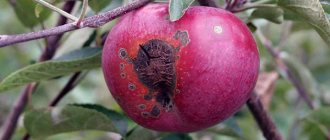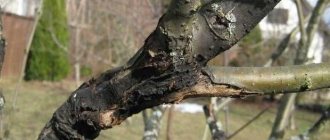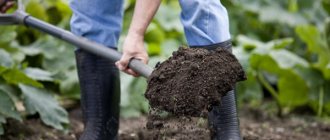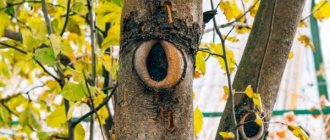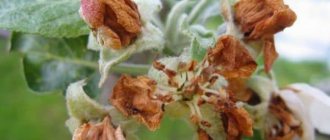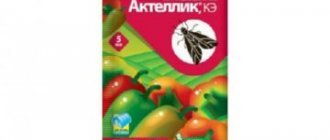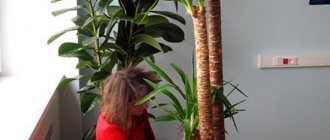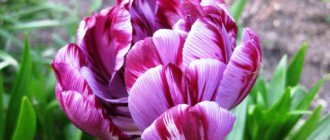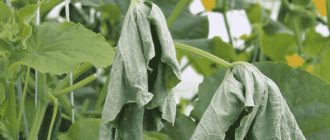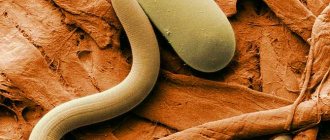Sooty fungus on apple trees is a disease caused by a microorganism such as aspergillus. It causes a range of diseases in humans and plants, more often affecting weakened living organisms than those that are strong enough to withstand pathological effects. Sooty fungus often accompanies aphids and other insects that leave sugary secretions. Therefore, the first step in disease control and treatment is the destruction of pests that infect plants. Sooty fungus must be treated, as it clogs the pores of plants, interferes with the normal breathing of leaves, and suppresses the natural processes of photosynthesis. The fungus tolerates winter frosts well and attacks again in the spring.
Treatment of sooty fungus on an apple tree
Sooty fungus is a rather dangerous and rapidly spreading disease, the manifestations of which cannot be ignored. Let's consider the main methods of treatment.
Read about sooty fungus on pears in this material.
How to deal with the disease mechanically
In case of severe damage, it is recommended to cut off and burn the branches. For prevention, after pruning, the trunk is cleaned and washed with solutions of iron, copper sulfate or caustic soda. If there are 2 weeks or more left before harvesting, treat the trees with a solution of soap and 1% vitriol. Baking soda (150 g of the substance per bucket of water will be enough) can be used even if the crop is almost completely ripe. When you have removed all the fruits, re-process the bark and leaves.
Sooty fungus forms a black coating on bark, branches, leaves and fruits. The pathogen feeds on sugars from the flowing juice of the apple tree and the sweet secretions of insects - aphids and moths.
Pest control
Insect pests weaken the tree's defenses, and it becomes more susceptible to the action of fungal microorganisms. Therefore, as part of the comprehensive treatment of sooty fungus, preventive spring treatments against pests may be useful:
Bukarka, which overwinters in the soil and becomes active after the buds swell. The pest damages the leaves of apple trees, lives for about 2-3 months, and lays larvae. Control methods include burning fallen leaves and treating with insecticides.
Bark beetle weevils - the beetles overwinter inside the branches in specially cut passages; pupation occurs in early May. Damaged branches begin to die and break. Methods of controlling the bark beetle are pruning and burning branches, and treating with fungicides.
Silkworms are large brown butterflies whose wings have characteristic serrations. The insect got its name due to the fact that a sitting butterfly, when folding its wings, becomes like a dry oak leaf. Caterpillars are identified during inspection, collected by hand and burned.
Swampweed is a dark brown beetle. Damages the bark, especially loves frostbitten and bark beetle-affected crops. Treatment with chlorophos is recommended.
The moth is a butterfly with developed wings; the larvae overwinter near the buds, near branches and bark. To combat them, fabric traps are used, and treatments with chlorophos help a lot.
Read this article about how to deal with flower beetle on an apple tree.
Maintaining plant immunity
Mineral fertilizers are as effective as chemicals and increase crop resistance to various diseases. Main options:
- Ammonium nitrate - use 30 g of a 30% solution per 10 liters of water, treat in early spring.
- Ammonium sulfate - a 3% solution at the rate of 20 g per 10 liters of water is used in early spring.
- Potassium chloride – 5-10%, added in spring at the rate of 20 g of the drug per 20 liters of water.
- Potassium salt - used for autumn treatments at the rate of 20 g per 30 liters of water.
- Potassium sulfate 5-10% - apply in the fall.
- Nitrophoska and urea are preparations for autumn feeding. Take nitrophoska 150 g, and urea 300 g per 30 liters of water.
You can find out how to feed apple trees in the spring here.
Information about the disease
Sooty fungus (black fungus) is one of the types of mold fungi.
Its spores overwinter in the bark of trees, and are also constantly present in the ground; they are activated by large accumulations of nectar and natural secretions of pests. That is why, in the process of fighting sooty fungus, first of all it is necessary to completely get rid of harmful insects: aphids, scale insects, larch, etc.
Causes
In addition to the awareness of pests in the growing medium, the appearance of fungus is caused by the following factors:
- insufficient sunlight;
- excessive thickening of the bark;
- improper care, which contributes to a decrease in immunity.
Symptoms and development
The appearance and development of sooty fungus occurs quite quickly: a black coating is observed within a few weeks from the moment the tree is infected with parasites. The disease progresses at high temperatures, which is especially noticeable in July and August.
The first sign of the disease is a coating of greasy soot on the surface of the bark, leaves, branches and fruits of the apple tree.
In addition, its presence is indicated by the following:
- premature leaf fall;
- fruits lose their former appearance and size, usually this occurs before harvest.
The fungus feeds on the sap secreted by the tree and the excrement of insects, especially aphids. As a result of plaque clogging the microscopic holes of the bark, air exchange is disrupted, which negatively affects the condition of the garden crop.
The black plaque is easy to wipe off or wash off with water, but in the absence of proper treatment, the infection begins to develop again. Only a competent set of measures will help to completely get rid of this problem.
Treatment
The algorithm of actions is as follows:
- If signs of sooty fungus are detected, severely affected branches should be immediately removed and burned.
- The damaged tree trunk must be cleaned and also washed with a 5% solution of iron or copper sulfate, a solution of caustic soda (100 grams per bucket of water).
- If eaten more than 15 days before harvesting, treatment with a 1% solution of vitriol (with the addition of soap to wet the leaves), a solution of baking soda (100 grams per bucket of water) is necessary.
How to Treat Fungal Mold with Fungicides
Fungicides used to combat fungus are divided into several groups and are:
- Therapeutic - stop the development of the disease, destroy the pathogen.
- Protective - inorganic and organic agents, used to prevent fungal infections.
- Complex fungicides - help in the prevention and treatment of plants.
- Immunizing drugs - improve plant metabolism, increase its resistance to bacterial diseases.
The principles of action may also be different. Contact fungicides protect against fungi only on the part of the plant where they are located. Dressing agents are used to treat bulbs and seeds. Liquid products are easy to use and move freely throughout the plant’s vascular system. They can save individual shoots or become an effective means of prevention in general. Popular water-based systemic drugs are Spectracide immunox, Ortho lawn disease control, Fertilome Systemic, Propiconazole.
To combat this lesion, there are various soot fungicides: STROBI, ZATO, HORUS, HORUS. Let's look at the most accessible ones:
- STROBI is a fungicide containing kresoxim-methyl. This is a dangerous substance that fights active fungi. Strobe is available in the form of balls, circles and granules. To treat with a strobe, you need to dissolve 2 grams of granules in 10 liters of water, then spray the apple tree with this solution, wetting all the leaves (no more than twice a year). The fruits can be consumed after a month of processing.
- SCOR is a systemic fungicide containing difenoconazole (250 g/l). Available in ampoules and vials. The drug is used at all stages of plant development. Scor is able to be absorbed into all plant organs in which photosynthesis occurs. It inhibits the sporulation of pathogens, reduces the intensity of the infection and the risk of subsequent lesions. To quickly treat an apple tree, use a solution of 2 ml of the drug per bucket of water.
Fitoverm
Insectoacaricide, effective against various types of garden plant pests. The main active substance is aversectin. Fitoverm has a contact and intestinal effect and enters the body through the skin. As a result of the pathological effect on the central nervous system, the insect is paralyzed and dies. The drug has been tested by the All-Russian Research Institute of Plant Protection and has been proven to be highly effective. After treatment, the substance begins to act within 8 hours in closed ground and 16 hours in open ground. Treatment of apple trees against leaf rollers, mites, moths, moths, cutworms is carried out 1-2 times during the growing season at the rate of 1.5-2 ml per 1 liter of water.
Fitoverm quickly breaks down in soil and water and does not pollute the environment.
How to deal with moss and lichen on trees?
Are lichens dangerous for trees and fruit trees in particular? What role do they play and why do they appear? These organisms simply live on the bark of trees, not being direct parasites, but nevertheless causing some harm to the plants.
In addition to the fact that lichen, like moss, is an excellent place for pests to hide on trees, they also slow down plant growth, as they do not allow the tree to breathe at full capacity. In addition to pests, lichen and moss often contain spores of fungal diseases. And this is another reason why it is necessary to fight this scourge. First, let's look at the conditions and reasons for the appearance of lichen on a tree.
First, unicellular algae - the most harmless - usually appear on tree trunks. However, this serves as an indicator that not everything is in order with the plant. Where do algae appear on the trunk and branches? Everyone knows that algae live in water. But not everyone knows that many of them have perfectly adapted to live on land, albeit in damp places. So, the green streaks on tree trunks are the same algae that have adapted to land conditions. They develop more strongly from the northwestern - shady side of the plant trunk, where the humidity is higher and there is no direct sunlight. The appearance of algae is a sure sign that the plantings in the garden are thickened, and that under the treetops it is dark and damp. To combat them, in addition to cleaning the trunks, it is very useful to cut out unnecessary, unproductive branches, thereby improving the illumination and ventilation of the crowns.
Further, following the algae, various lichens begin to appear on plant trunks in the form of crusts, rosettes, and less often bushes of gray, green, orange, brown and other colors and shades.
Lichen is not a single plant, but a group of primitive organisms, which is a symbiosis of fungi and algae, coexisting together where they cannot live separately. The fungus protects the algae from drying out and supplies it with water and mineral salts. And she, in turn, supplies him with photosynthetic products, mainly sugars, which the mushroom itself cannot produce. Lichens do not have roots, so they cannot parasitize on a tree (feed on its juices); they only need the tree for support. But, nevertheless, lichens greatly harm plants. The fact is that the entire trunk and branches of trees are covered with small and sometimes large lentils, through which the plants breathe. Settled on the trunk, lichens cover them, thereby disrupting the tree’s breathing process. In addition, as mentioned earlier, insect pests often settle in the thalli. This is the main reason why you should fight lichens and moss on trees.
It should also be taken into account that lichens appear only on weakened plants. So if you find them in your garden, look for the reason for the poor condition of the trees. There can be many of them, but most often plant oppression is caused by flooding of the roots by closely located (closer than 1.5 m from the surface of the earth) groundwater. Apple trees, and especially pears, cannot stand this. Their root system partially dies off, and the tree weakens.
But there is also good news. The appearance of lichen indicates that the summer cottage or estate is located in an environmentally friendly place, since the lichen does not tolerate air pollution. Lichens are an indicator of air purity; they settle where it is rich in oxygen and contains a minimum amount of harmful substances.”
However, after lichen, real parasitic fungi (obligate parasites) also settle on tree trunks - these are various types of rust and other microscopic pathogenic fungi. They cause direct harm to trees by feeding on their sap, so constant control is necessary.
Ways to combat lichen on trees
1. To do this, you need to make a very simple device - a wooden scraper. It is wooden, since metal can seriously damage the healthy wood of the plant. It is better to remove lichen or moss from trees in the spring, since at this time the trees contain a sufficient amount of moisture, which enters the moss, and it is easier to remove it. Place a plastic sheet or tarp under each affected tree and scrape off the peeling bark, along with any uninvited residents, including eggs, pupae, and adults of various pests. You need to scrape until the wood is healthy, then treat the area with 1-3% iron sulfate or cover it with a lime solution. It is useful to spray the ground under the tree with a solution of urea (a matchbox in a bucket of water).
2. In late autumn, when lichen on trees has more conditions for reproduction, it is necessary to carry out preventive whitewashing of the main skeletal branches and tree trunks. If there are too many trees, then you need to whitewash, at least the trees cured of lichen and those adjacent to them. At the end of winter, it is very advisable to re-whitewash. For whitewashing, take 2-3 kg of lime, 1 kg of clay, a little mullein per 10 liters of water and add 100-150 g of copper sulfate or table salt. You can purchase ready-made whitewash for trees in the store. A little secret for experienced gardeners: to make the whitewash stick better to the tree bark, add 1-2 cups of skim milk. For young trees this operation is unnecessary.
3. The best option in the fight against lichens on fruit and shrub plants is spraying with a 7 - 10% solution of iron sulfate (300 - 500 g per 10 liters of water) in the spring in the phase of dormant buds. Important: the pre-dry preparation should be thoroughly mixed in a small amount of hot water, and then, adding cold water, bring to the required volume. This is a contact action drug; it does not accumulate in plant tissues. After a week, the lichens and mosses should fall off on their own. Don’t forget to also cultivate the ground under the trees: iron sulfate is an excellent preventive measure against other diseases of fruit trees.
4. If garden trees are not heavily covered with lichen, then you can use an easier cleaning method: mix 1 kg of salt, 2 kg of wood ash, crumble 2 pieces of laundry soap into this mixture, pour in 10 liters of hot water, bring to a boil, cool and coat the resulting composition of tree trunks. If lichens appear on trees periodically, then you can also use the ready-made preventive antifungal drug Skor (or similar). It must be diluted in accordance with the instructions and applied to the tree in early spring using one of the previously described methods.
5. Also, if there is not a lot of lichen on the tree, and to prevent its appearance, it is recommended to spray the trunks and branches with lime milk: 1 kg of lime per 10 liters of water. If it rains after spraying the plants, the treatment should be repeated.
If your garden is very neglected and almost all the trees are covered with lichen and moss, then before carrying out the cleaning procedure, you need to carry out sanitary felling. Some trees may be so infested with lichen growth that cleaning them is no longer useful.
Examine each tree carefully: it may be possible to get by with selective pruning of branches. In general, it is recommended to do constant thinning pruning of garden trees, so that the crowns will not thicken. This will have a beneficial effect on the additional flow of air and light: in such a garden there will be no high humidity and, accordingly, excessive growth of mosses and lichens.
When removing lichen, you need to remember that pathogens can also be found in the root zone of the tree. Therefore, you need to collect and remove fallen leaves around it.
Prevention: what to do
It can be too late and difficult to treat a tree, so experienced gardeners recommend paying special attention to prevention. Infection with sooty fungus occurs due to:
- failure to treat wounds with garden varnish;
- activities of sucking, leaf-eating insects;
- improper pruning (excessive thickening of the crown).
Carry out scheduled pruning of trees, regularly do preventive treatments against fungi and pests, so as not to lose the harvest due to aphids. You can use hunting belts, insect traps, and lure birds to areas. Spraying with Bordeaux mixture 3% also helps. But you can find out how to cover the saw cut on an apple tree with improvised means here.
The best prevention of sooty fungus is careful and systematic tree care.
Mandatory preventive measures:
- Pruning (remove) branches damaged in winter and eradicating spraying.
- Fertilizing with spring fertilizers.
- Using insect traps.
- Pruning in spring.
- Repeated spraying after bud break and flowering.
- Water when filling fruit only if absolutely necessary.
- Feeding with potassium and phosphorus in the fall.
- Autumn pruning of the garden, removing (getting rid of) yellow and fallen leaves and branches from the site.
- Whitewashing trunks.
How to fight and what to treat?
When a fungus is detected on apple trees, first of all it is necessary to find out: what led to the infection, what mistakes were made? It is necessary to develop a strategy for restoring the health of the garden.
Young trees are less susceptible to the disease, but the fungus can kill them in one season.
There is good news - it’s easier to treat a young garden right away with strong chemicals, without regard to the “waiting period before harvesting.”
In addition to Bordeaux mixture, you can use all copper-containing preparations such as:
- “HOM”;
- “Skor”;
- "Topaz".
Advice! You can try to save older trees with ovaries with a solution of baking soda (150 grams per bucket of water). Do not be alarmed if the tree drops its fruit - this is how it saves its life. Having given a full harvest, the apple tree will not be able to survive the winter.
When pruning in autumn, these apple trees need to be rejuvenated as much as possible and the crown thinned out.
Don't forget to whiten the trunks.
Sooty fungus - treatment and prevention
The appearance of sooty fungus occurs unexpectedly for the gardener - it is difficult to notice black stains on the bark.
It is impossible not to notice plaque on apples. It is too late to treat the garden against disease.
A tree is affected by this disease for several reasons:
- Wounds not treated with garden varnish;
- Leaf-eating and sucking insects (aphids, copperheads);
- Improper pruning of a tree results in a thickened crown.
Regular scheduled work in the garden at the same time represents the best prevention and treatment of sooty fungus on the apple tree.
There is no point in dwelling on the need to use garden varnish separately. Regular pruning of the garden in spring and autumn should be the rule.
And all preventive treatments of the garden against fungal diseases and pests will not allow you to lose the harvest due to aphids.
Timely installed insect traps, catching belts, and the attraction of birds and insect predators are well protected from the appearance of insects.
Early spring, before the buds open, “blue” spraying with 3% Bordeaux mixture is the best protection against various fungi that parasitize the garden.
If obvious signs of fungus are detected, treatment cannot be delayed.
Remove severely affected branches regardless of the season - the damage from the disease significantly exceeds the apparent damage from pruning at the wrong time.
Everything cut must be burned.
A heavily damaged tree trunk must be cleaned and washed:
- 5% solution of vitriol (copper or iron),
- a solution of 100 grams of caustic soda per bucket of water.
If there are still at least 15 days before harvest:
- treat with a 1% solution of vitriol with the addition of soap to wet the leaves.
- A solution of baking soda (150 grams per bucket of water) can be used without harm to human health and treated with apple trees with almost ripe fruits.
After harvesting, it is advisable to re-treat the apple trees - the fungus will not allow the apple trees to properly prepare for winter.
Attention! Particular attention should be paid to autumn pruning of the garden. If apple trees suffer from fungal diseases, their branches must be thinned out as much as possible (within reason). Make sure that there are no rotten spots left on the branches; it is advisable to rake the leaves of diseased apple trees and burn them. Whitewashing the trunks for the winter is mandatory. Care throughout the year.
The best prevention of various garden diseases is proper tree care throughout the year.
Everything should go smoothly, without rush jobs. Then there won’t be any special problems.
Healthy trees do not catch infections all over the place.
Important! Every missed operation in the garden threatens big problems in a month or two.
Mandatory preventive measures:
- Spring pruning of branches damaged in winter followed by eradicating spraying;
- Feeding apple trees with a complex of spring fertilizers;
- Installation of trapping belts and other traps for insect pests;
- Repeated spraying after bud break and after flowering;
- Water during fruit filling only when necessary;
- Autumn feeding of the garden with phosphorus-potassium fertilizers;
- Autumn pruning of the garden, removing all remains from the site (especially mummified fruits from the branches);
- Mandatory whitewashing of trunks before winter.
Whitewashing of trees.
In addition, following the recommendations will help protect the garden and harvest:
- When spraying, try to treat the trunk circles against fungi;
- When using garden tools, disinfect them often;
- Harvest with gloves: the slightest scratch on an apple is a source of rot;
- Do not forget to remove rotten apples from the branches - pathogen spores will infect the garden for another 2 years.
conclusions
- Sooty fungus / garden fungus is a dangerous disease that very quickly spreads to other trees in the garden.
- Treatment should be comprehensive - mechanical removal of branches, treatment with fungicides, insecticides, fertilizing to strengthen plant immunity.
- Pay enough attention to disease prevention, since it is easier to prevent the development of pathology than to treat it later. Regular tree pruning is required.
Read what to do if the bark of an apple tree cracks at this link.
Mold On Trees! How to Get Rid of It?
All the apple trees in the garden plot are affected by some kind of mold. Or maybe it’s not mold, but some other disease? The photo shows “mossy” areas of tree trunks and branches. But it must be said that this is not only on apple trees, but on all trees in general: on blackthorn, plum, cherry, rowan. I tried to clean off this mold, but it only comes off along with the bark. It turns out that I seriously injure the tree and only open the passages for small pests. Its color is grey-green, “swamp”, and on some trees it also acquires a yellowish tint.
It's not mold. This is a lichen. Where it grows, there is also a special type of algae that settles in very humid places. If you have lichens growing on trees, it means that the trees are growing too densely, or there is too much shade, humidity, not enough light and sun, or the groundwater is too close. To reassure you, I can tell you that since lichens have settled in your area, it means that you have an ecologically clean area. Because in the mud, where there is little oxygen, this nasty thing does not live.)
It is necessary to scrape off lichens, but with a wooden spatula or scraper so as not to damage the bark. It is necessary to prune the most affected branches. So, you will not only get rid of them, but also give more light to the tree, which is necessary. You cannot scrape it onto the ground, otherwise re-infestation will occur - you need to lay a film under the tree, which you then destroy along with the contents. And the treated areas of the tree, especially where the bark has been torn off, need to be covered with a solution of lime or vitriol.
And just in late autumn, whiten all your trees - healthy branches, trunks and those parts of the tree where you removed the lichen. And at the end of winter we repeat the whitewashing!
When the trees lose their leaves, and then before spring, until the buds swell, you need to spray the trees with a solution of iron sulfate. And the ground under the trees also needs to be sprayed.
In general, for prevention, trees should be periodically sprayed with a lime solution.
Well, very heavily infected trees - just cut them down! Otherwise, the infection will spread from them to healthier specimens.
My dacha is in the swamps, so I removed all this rubbish from myself using exactly these methods. Well, a lot of things had to be cut down to give the trees and bushes air and open light.
Signs of fruit tree disease
Mold, moss, lichen - all these are harmful microorganisms that have settled on tree trunks for various reasons. In nature, there are up to 25 species of lichens. They can be distinguished by external features.
The infection process begins with the proliferation of algae on the tree bark (green stains). This occurs due to excessive dampness in the garden. First of all, they appear in the shade. A little later, the new growth begins to harden and turn into a real lichen.
In addition, mushrooms may appear that are accustomed to feeding on tree tissue, which causes great harm to the garden. A fungal infection is distinguished by mold and rusty plaque. In case of serious damage, drying areas are visible on the tree trunk.
